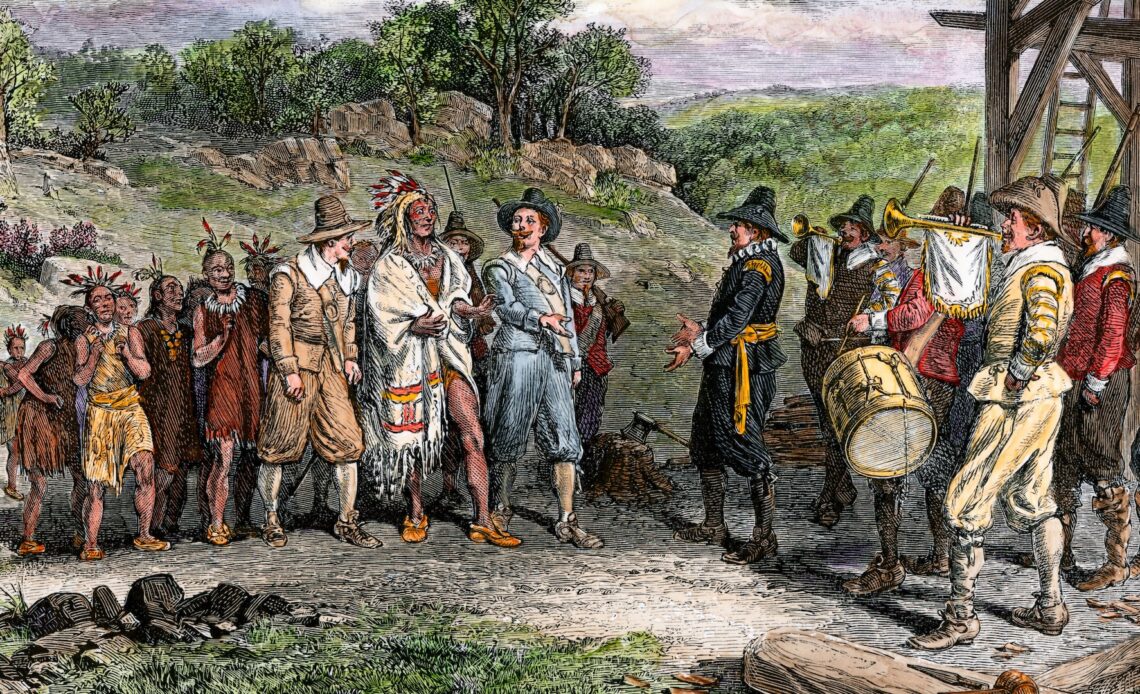Every November, Americans gather around the table to celebrate Thanksgiving in commemoration of the 17th-century partnership between the newly arrived English colonists and the Indigenous Wampanoag people.
Well, at least that’s the simplified story kids are taught in school. The truth is more complex. So what really happened on the first Thanksgiving in 1621?
“The missing parts of the story are quite dark and not the stuff of family celebrations,” David J. Silverman, a historian who specializes in early American and Native American history at The George Washington University in Washington, D.C., told Live Science. He added that its historical relevance was determined retroactively hundreds of years later.
In 1620, about 100 religious Pilgrims left England on the Mayflower for the “New World” and landed in modern-day southeastern Massachusetts, a region inhabited by the Wampanoag people. They’d originally planned to settle in the northern part of the preexisting Virginia Colony, but bad weather led them to seek shelter in Cape Cod, where they then decided to stay, according to the Plimouth Patuxet Museums. The Pilgrims subsequently founded Plymouth Colony and formed an alliance with the Wampanoag.
“The Thanksgiving myth that many Americans have been brought up with would have us believe that the English were lucky enough to stumble upon friendly Indians,” Silverman said. He explained that, in reality, the Wampanoag were willing to form a military alliance because disease had recently decimated their populations and made them vulnerable to enemy tribes, such as the Narragansett people. Although scholars don’t know what the disease was, it’s known that the pathogen arrived on a previous European expedition.
Related: Did Benjamin Franklin really want the turkey to be the US national bird?
By that point, the Wampanoag had been in contact with Europeans for over a century, including expeditions by the Italian Giovanni da Verrazzano in 1524, the English Bartholomew Gosnold in 1602, the English Martin Pring in 1603 and the French Samuel de Champlain in 1605. These encounters “routinely degenerated into violence and even kidnapping” on both sides, Silverman said. Nevertheless, the Wampanoag still chose to form an alliance because of, among other things, the colonists’ military technology: metal weaponry and guns.
“The fact that their friendship was also a military alliance against the…
Click Here to Read the Full Original Article at Livescience…

